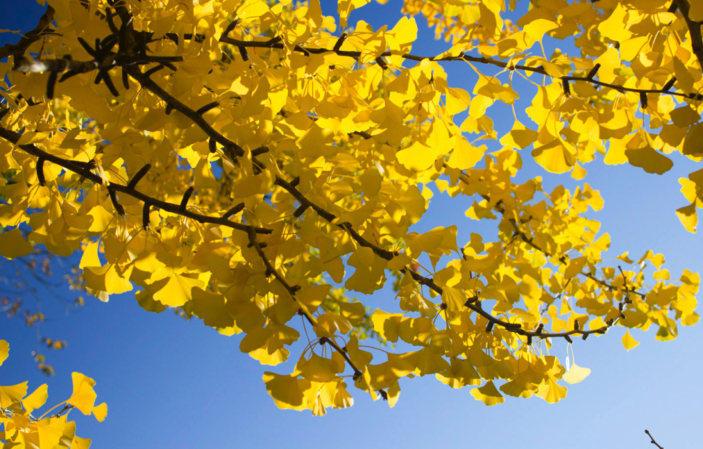
By Sherley Smith
The ginkgo tree is the oldest living tree species in the world. It is a botanical “living fossil,” dating to the time of the dinosaurs -250 million years ago. It was the very first seed-producing tree, which means it was the first tree that could live and reproduce on land. Ginkgo biloba is a “single species,” which means it has no living relatives, and fossil ginkgo leaves have been found on every continent, but the tree primarily survived in the protected valleys of China. In the eighteenth century, European visitors discovered the ginkgo on the grounds of Buddhist temples in China, Japan, and Korea.
Ginkgos are well represented in two of our parks, with thirteen gingko trees on Boston Common, and eight in the Public Garden, both male and female trees. The first Ginkgo biloba in the parks was transplanted to Boston Common near the Joy Street steps in 1835. Already 40 feet tall at the time, that tree was moved to the Common from the nearby estate of Mrs. Gardiner Greene, daughter of John Singleton Copley.
The male tree produces small, cone-like structures that hold pollen. When female trees are about 25 years old, they produce small fruits with a fleshy, apricot-colored skin around the nut inside. The pulp is quite pungent when mashed and has a strong odor that many find unpleasant.
Long valued for aesthetic, religious, and medicinal reasons, it is said that Confucius studied under a ginkgo tree, giving it special meaning to Buddhists. The nuts are thought to have healing properties and can be eaten as a special delicacy. Extracts of the leaves are also used in medicines to enhance memory or stimulate blood flow.
Due to its resilience, the ginkgo has become a popular ornamental tree in the last fifty years. The tree tolerates pollution, extreme temperatures, road salt, and the confinement of being planted along a street. It is also both pest- and disease-resistant. It is easy to see why the tree is a symbol for longevity in Asia. There is an individual Chinese ginkgo said to be 3,500 years old.
The ginkgo is easy to identify due to its unique, fan-shaped leaves, with veins that fork outward from a central point. Its common name is “maidenhair tree” because the leaves resemble the leaves of a maidenhair fern. Carl Linnaeus, the renowned Swedish naturalist, gave the tree its Latin name, “Ginkgo Biloba,” which refers to the lobed shape of its leaf. In autumn, the leaves turn a beautiful golden hue before falling to the ground, typically all at once, resulting in a wonderful carpet of yellow surrounding the tree
Look for the ginkgos as you walk in the Public Garden and the Boston Common.

